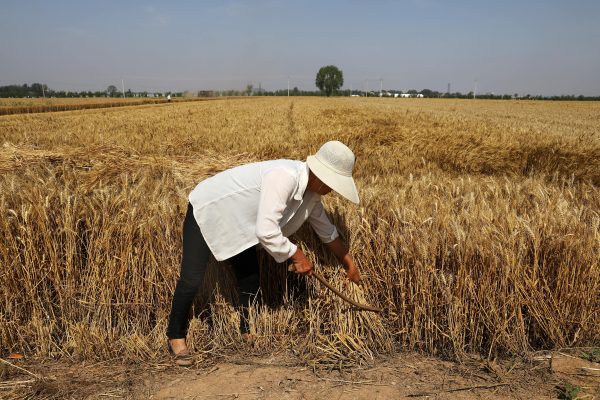The Ministry of Agriculture and Rural Affairs’ Five-Year Plan, which was released in December 2021, sets out China’s new self-sufficiency targets. This includes full self-sufficiency for poultry and eggs, 95 per cent self-sufficiency for pork, 85 per cent for beef and mutton and 70 per cent for dairy. China’s current self-sufficiency levels for meats and dairy are already high, but rising incomes and rapid urbanisation means that China is consuming more animal proteins. Maintaining the current level of self-sufficiency will require greater domestic production. China’s meat output target for 2025 is 89 million tonnes, about 15 per cent higher than 2020.
Given China’s current challenges, addressing food security is an ambitious task. Aside from the potential for future outbreaks of African Swine Fever, China remains under pressure from other factors. China has limited farmland, is faced with climate change impacts and must maintain sustainable water supplies. These factors have left domestic food production falling behind rising demand.
One of the biggest challenges to China’s new aims lies in feed, such as soybean and corn. To increase meat production, millions of tonnes of feed grain will need to be either produced domestically or imported from abroad. But producing more feed grain at home would directly conflict with China’s push to achieve absolute security in the supply of staples, primarily wheat and rice. If China sets aside its limited arable land for feed production, there will inevitably be less land left to produce rice and wheat.
To cope with land shortages, the Chinese government has pushed for greater use of technology to stabilise crop yields and ensure supplies, such as developing superior soybean varieties. The government has moved closer to giving the green light for the commercialisation of genetically modified soybean and corn while urging progress in biotech breeding.
But China’s push for greater self-sufficiency in protein and dairy may eventually result in even greater imports of feed grain to meet the country’s growing demand for livestock feed. This could lead to higher global food prices and China controlling a more significant share of global livestock feed.
An alternative approach is the domestic production of cultivated meat. A relatively new but controversial technology for cultivating meat aims to overturn traditional animal agriculture by replacing slaughterhouses with laboratories. While regulatory approval for the commercial sale of cultivated meat in China is yet to be given, other alternatives such as plant-based meat are already produced and sold in China.
The Chinese government has demonstrated a growing interest in cultivated meat. In January 2022, the Ministry of Agriculture and Rural Affairs released the five-year agricultural plan which, for the first time, included a section on ‘creating future foods’ like lab-grown meat.
If approved for commercial sale, lab-grown meat may help satisfy growing consumer demand for meat by offering an alternative protein that does not rely on feed grain. Considering China’s many domestic challenges and climate change goals, lab-grown meat may be seen as a suitable answer to achieve self-sufficiency aims.
Smart farming or Agriculture 4.0 is another approach where farms are managed through technologies including Internet of Things and Artificial Intelligence to increase the quality and quantity of goods produced while optimising human labour. These practices are already in place in various parts of China, like Zhejiang Province, and are supported by Chinese government guidelines to promote digital technology.
The use of smart farming and agricultural technology intersect with China’s other major plans, including agricultural modernisation and the national transportation networking planning outline. Expanding these practices could encourage greater agricultural production yields without exacerbating issues arising from urbanisation and an ageing rural workforce, while also supporting China’s self-sufficiency aims.
It remains to be seen how some of China can achieve its self-sufficiency targets and food security goals given the major challenges it faces, such as land scarcity and degradation, water shortages, pollution, rural labour outflow and ageing. Additionally, external factors such as the higher cost of fertilisers may also hinder self-sufficiency targets.
There is considerable potential for implementing innovative solutions and technological developments to satisfy Chinese consumers’ growing demand for meat. If regulatory approval is granted as expected, China could become a world leader and the biggest market for alternative protein with the establishment of an ‘agricultural Silicon Valley’ for research and development. But before these innovative solutions can be implemented, cost, sustainability and food safety concerns need to be addressed.
Genevieve Donnellon-May is a master’s candidate at the University of Oxford.
Dr Hongzhou Zhang is Research Fellow in the Institute of Defence and Strategic Studies at the S Rajaratnam School of International Studies (RSIS), Nanyang Technological University, Singapore.

